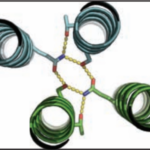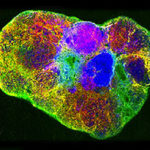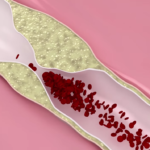Over the course of billions of years, nature has evolved particular molecular structures that form the basis of life, such as those found in nucleic acids and proteins. Using the natural form as a springboard, University of Washington researchers have designed protein homo-oligomers, or identical interacting subunits, which can contain interchangeable hydrogen bonding modules for building different structures or functions. The team of researchers, led by David Baker at the University of Washington, included Jose Henrique Pereira, Banumathi Sankaran, and Peter Zwart of the Molecular Biophysics & Integrated Bioimaging Division (MBIB).
JBEI Scientists Unravel Omics Data Using Systems Biology-Based Workflow To Improve Biofuels Productivity
 The development of omics technologies, such as metabolomics and proteomics, and systems biology have dramatically enhanced our ability to understand biological phenomena. Nevertheless the interpretation of large omics data into meaningful ‘knowledge’ as well as the understanding of complex metabolic interactions in engineered microbes remains challenging. Biological Systems & Engineering Division researchers at the Joint BioEnergy Institute (JBEI) in collaboration with researchers at the University of California, San Diego, and led by principal investigator Taek Soon Lee, have developed a workflow that integrates various omics data and genome-scale models to study the effects of biofuel production in a microbial host. Read more on the JBEI website.
The development of omics technologies, such as metabolomics and proteomics, and systems biology have dramatically enhanced our ability to understand biological phenomena. Nevertheless the interpretation of large omics data into meaningful ‘knowledge’ as well as the understanding of complex metabolic interactions in engineered microbes remains challenging. Biological Systems & Engineering Division researchers at the Joint BioEnergy Institute (JBEI) in collaboration with researchers at the University of California, San Diego, and led by principal investigator Taek Soon Lee, have developed a workflow that integrates various omics data and genome-scale models to study the effects of biofuel production in a microbial host. Read more on the JBEI website.
Two Bioscientists Selected for World Economic Forum Honor
Karen Davies, staff scientist in the Molecular Biophysics & Integrated Bioimaging Division, and Jenny Mortimer, Director of Plant Systems Biology at the Joint BioEnergy Institute, are two of 50 extraordinary scientists under the age of 40 who have been selected to participate alongside business and political leaders in the World Economic Forum’s Annual Meeting of the New Champions, which is taking place from June 26-28 in Tianjin, China.
Berkeley Lab’s OpenMSI Licensed to ImaBiotech
Two years ago, Lawrence Berkeley National Laboratory (Berkeley Lab) researchers developed OpenMSI—the most advanced computational tool for analyzing and visualizing mass spectrometry imaging (MSI) data. Last year, this web-available tool was selected as one of the 100 most technologically significant new products of the year by R&D Magazine. Now, OpenMSI has been licensed to bolster ImaBiotech’s Multimaging™ technology in the field of pharmaceutical and cosmetic research and development. With support from the National Energy Research Scientific Computing Center (NERSC), Ben Bowen of the Environmental Genomics and Systems Biology Division and Oliver Rübel of the Computational Research Division conceptualized and developed OpenMSI.
Got Plaque? Berkeley Lab Tech Provides Measure of Artery Health
What if checking the state of your arterial health were as simple as monitoring your blood pressure? New technology developed by Jonathan Maltz, a scientist in Berkeley Lab’s Molecular Biophysics and Integrated Bioimaging division, could make this a reality. Maltz came up with the idea of using sensors to detect the changes in the pulse pressure as blood flows through the brachial artery, a major vessel in the upper arm. Previous studies have shown a strong correlation between the health of brachial and coronary arteries. With initial funding from a Berkeley Lab Innovation Grant, Maltz developed an advanced prototype called the Engevity Cuff, which looks and feels much like a blood pressure monitor. He worked with UC San Francisco (UCSF) chief cardiologist Jeffrey Olgin and his team, who are conducting a major heart health study, to test the device on real patients. Last fall, startup company Lexington Biosciences licensed the technology to help further refine the device and bring it to the medical market.
- « Previous Page
- 1
- …
- 184
- 185
- 186
- 187
- 188
- …
- 213
- Next Page »
Was this page useful?







